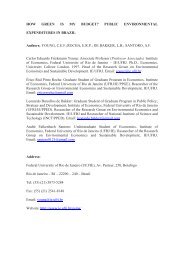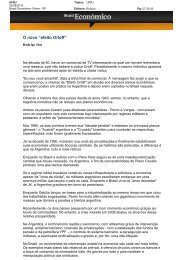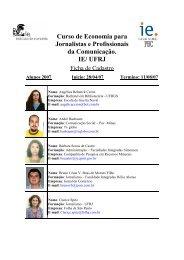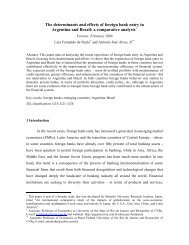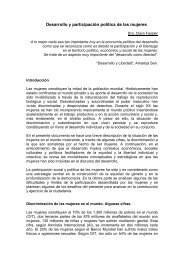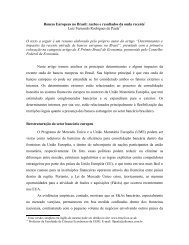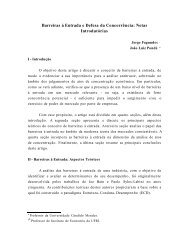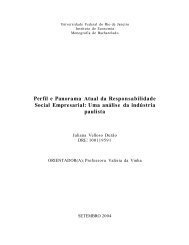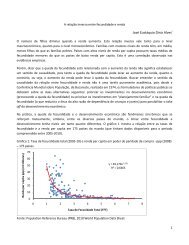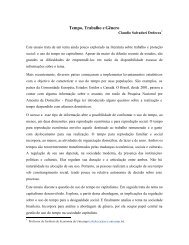Trade Integration for the Americas: What Can Economic Analysis ...
Trade Integration for the Americas: What Can Economic Analysis ...
Trade Integration for the Americas: What Can Economic Analysis ...
- No tags were found...
Create successful ePaper yourself
Turn your PDF publications into a flip-book with our unique Google optimized e-Paper software.
5<strong>the</strong> same token, but <strong>for</strong> reasons of sectoral production changes, changes in industriallocation and regional effects may also accompany a RTA (or, <strong>for</strong> that matter, trade policyliberalization or de-liberalization).III. Assessing <strong>the</strong> Impact of Regional <strong>Trade</strong> ArrangementsA. Computable General Equilibrium (CGE) ModelsIn assessing <strong>the</strong> effects of different trade policy arrangements, including regionaltrade agreements, three different, but complementary, types of economic analyses areappropriate and well suited. They involve <strong>the</strong> use of (a) computable general equilibrium(CGE) models and, secondly (b) sectoral studies founded on partial equilibrium analysis,undertaken to go beyond <strong>the</strong> insights af<strong>for</strong>ded by CGE work and provide greater sectoraldetail and understanding. A third analytical tool – gravity models – also is pertinent andwill be discussed below. Quantification of <strong>the</strong> effects of trade policy changes is desirablein order to best assess <strong>the</strong> magnitudes of effects, <strong>the</strong> trade-offs and benefits/costs todifferent policy alternatives. The use of CGE models and sector studies complement eacho<strong>the</strong>r in terms of <strong>the</strong>ir quantitative results. (See Table 3 below.) Some important effectsof RTAs however are essentially non-economic or political, as indicated above. Theseeffects can not be quantified.Major Features of CGE Models. Over <strong>the</strong> past twenty years <strong>the</strong> use of CGEmodels has become commonplace in order to assess <strong>the</strong> effects – both direct and indirect– of economic shocks or policy changes. Advances in computational techniques havefacilitated <strong>the</strong> use of such models. The basic idea underlying a CGE modeling exercise isrelatively simple. It involves: (a) <strong>the</strong> construction of a ma<strong>the</strong>matical model of aneconomy; (b) <strong>the</strong> collection of data <strong>for</strong> a time period <strong>for</strong> those variables <strong>for</strong> which dataare available; (c) calibration and solution of <strong>the</strong> model ma<strong>the</strong>matically to establish <strong>the</strong>initial equilibrium values; (d) imposition of a shock to <strong>the</strong> initial equilibrium in <strong>the</strong> <strong>for</strong>mof some exogenous event, such as a policy change; and (e) <strong>the</strong> observation of simulationsderived from <strong>the</strong> introduction of <strong>the</strong> shock on various variable values.CGE models are founded on Walrasian general equilibrium <strong>the</strong>ory in whichmarket prices and quantities are simultaneously determined. <strong>Economic</strong> agents comprisingfirms, households and government make economic decisions related to production andconsumption <strong>for</strong> different goods and services. Equilibrium conditions are established in<strong>the</strong> multiple goods and services markets such that demand and supply conditionsdetermine prices and quantities. Factor markets – generally specified as land (<strong>for</strong>agriculture), capital and labor – are similarly specified. CGE models are general in <strong>the</strong>sense that <strong>the</strong>y include all <strong>the</strong> economy’s sectors and economic agents. Consequently,upon solution all <strong>the</strong> effects – direct and indirect – of a given shock can be assessed.



